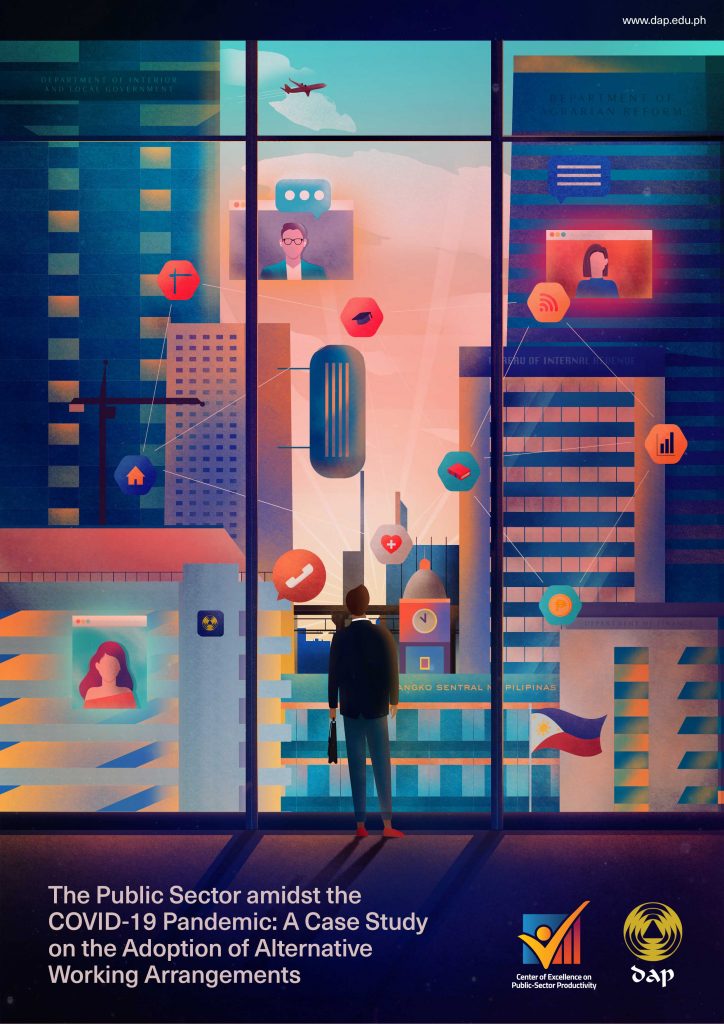The COVID-19 pandemic has inevitably disrupted how employees traditionally worked. It forced organizations, both public and private, to adopt alternative work arrangements to sustain productivity and efficiency amid the ongoing crisis. For the public sector in particular, much is expected from the national and local government agencies to keep the unhampered delivery of key public services as the country grapples with the ramifications of the pandemic. It is against this backdrop that this case study attempts to situate the productivity of government agencies from the perspective of 2,756 civil servants as they adopted alternative work arrangements during the community quarantine period in May 2020.

Conducted through an online survey and focus group discussion, the findings showed that the alternative work arrangements adopted during the community quarantine period under study, regardless of what type, had positive effects on the perceived performance and productivity of government employees. The satisfactory level of self-perceived productivity of government employees reflected their agility in adjusting to non-traditional forms of work arrangements and resiliency in remaining productive and efficient amid an unprecedented external shock. The expected outputs from the respondents were still delivered, although the individual and organizational targets have unavoidably changed to suit the evolving new realities. From the agencies’ viewpoint, some savings were reportedly realized but there were also additional expenses incurred. There were adjustments pursued by the agencies which also signified the extra effort they exerted to ensure that their core services are delivered despite the disruptions while also safeguarding the health of their employees.
Unsurprisingly, the availability of ICT tools and equipment provided by the agencies and the availability of strong internet connectivity facilitated the employees’ accomplishment of their tasks while working under alternative work arrangements. Aside from these ICT-related factors, organizational culture—particularly high levels of trust and support from management, and an ethos of communication and collaboration within the organization—also plays a pivotal role in maintaining employee productivity.
However, alternative work arrangements, especially remote work, come with additional personal costs which can be a burden to many. A majority of the non-managerial employees were using their personal computer/laptop and internet connection to work on their assigned tasks while at home. The physical environment at home also affected their productivity performance. Those who work-from-home reportedly get easily distracted by personal matters such as household chores and childcare. However, having a conducive work environment at home is already within the control of the employees but might prove to be extra difficult given the pandemic situation.

Finally, while government employees reported satisfactory levels of productivity during the community quarantine period, providing them adequate support to help them remain productive while safeguarding their overall well-being during this uncertain time is of utmost importance. From the case study’s findings, the key recommendations include 1) maximizing the use of digital technologies and leveraging individual competencies in using these technologies; 2) establishing concrete performance standards for functions and tasks done remotely; and 3) recalibrating policies and guidelines in relation to human resource and performance management.
For a copy of the report, please email coe_psp@dap.edu.ph.
